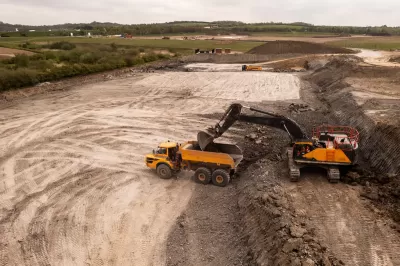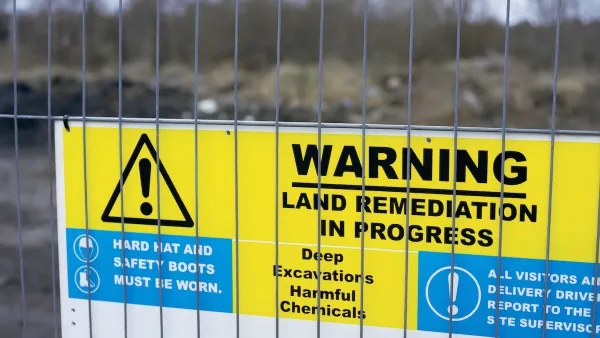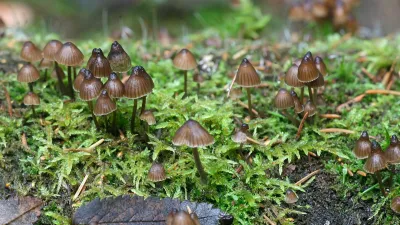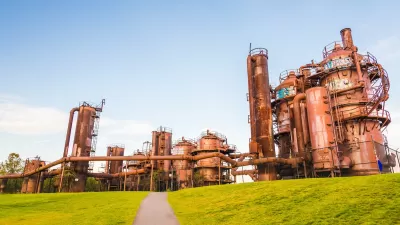Fungi and plants are being used to detoxify polluted sites, turning hazardous brownfields into vibrant meadows and empowering communities with eco-friendly remediation skills.

The United States is home to an estimated one million brownfields — industrial and commercial sites polluted with hazardous substances, often located near low-income and minority communities. Danielle Stevenson, a PhD toxicologist from UC Riverside, has been developing nature-based techniques using fungi and native plants to remediate these contaminated sites. As reported by Richard Schiffman, her methods aim to break down toxins like petroleum, plastics, and pesticides into less harmful chemicals, providing a more sustainable solution compared to traditional methods that involve costly excavation and relocation of contaminated soil.
Stevenson's approach, termed mycoremediation, leverages the natural decomposing abilities of fungi to degrade petrochemicals, transforming them into non-toxic substances. In recent projects in Los Angeles, her team successfully reduced petrochemical pollutants and heavy metals at several industrial sites, transforming these areas into thriving meadows of native plants. These efforts not only rehabilitate the environment but also foster biodiversity, as evidenced by the return of bees, birds, and other wildlife to these revitalized spaces.
Her innovative work extends beyond cleanup to include community empowerment. Stevenson collaborates with environmental justice and tribal communities, offering training programs that enable these groups to manage and remediate their local toxic sites independently. By involving local populations in the restoration process, she promotes environmental justice and provides them with the skills and knowledge necessary to sustain their efforts long-term.
Stevenson's projects demonstrate the potential of bioremediation to address pollution more effectively and sustainably. By integrating fungi and plants into cleanup efforts, her methods offer a cost-effective and ecologically sound alternative to conventional practices. Moreover, her commitment to involving and educating communities ensures that the benefits of these environmental advancements are widely shared, contributing to healthier and more resilient ecosystems.
FULL STORY: Turning Brownfields to Blooming Meadows, With the Help of Fungi

Maui's Vacation Rental Debate Turns Ugly
Verbal attacks, misinformation campaigns and fistfights plague a high-stakes debate to convert thousands of vacation rentals into long-term housing.

Planetizen Federal Action Tracker
A weekly monitor of how Trump’s orders and actions are impacting planners and planning in America.

San Francisco Suspends Traffic Calming Amidst Record Deaths
Citing “a challenging fiscal landscape,” the city will cease the program on the heels of 42 traffic deaths, including 24 pedestrians.

Opinion: What San Francisco’s Proposed ‘Family Zoning’ Could Really Mean
Mayor Lurie is using ‘family zoning’ to encourage denser development and upzoning — but could the concept actually foster community and more human-scale public spaces?

Jacksonville Launches First Autonomous Transit Shuttle in US
A fleet of 14 fully autonomous vehicles will serve a 3.5-mile downtown Jacksonville route with 12 stops.

‘Big, Beautiful Bill’ Guts EV Tax Credits
The bill eliminates federal subsidies for electric vehicle buyers and charging stations.
Urban Design for Planners 1: Software Tools
This six-course series explores essential urban design concepts using open source software and equips planners with the tools they need to participate fully in the urban design process.
Planning for Universal Design
Learn the tools for implementing Universal Design in planning regulations.
Gallatin County Department of Planning & Community Development
Heyer Gruel & Associates PA
JM Goldson LLC
City of Camden Redevelopment Agency
City of Astoria
Transportation Research & Education Center (TREC) at Portland State University
Jefferson Parish Government
Camden Redevelopment Agency
City of Claremont





























